#ATMOSPHERIC SCIENCE
Explore tagged Tumblr posts
Text
As relentless rains pounded LA, the city’s “sponge” infrastructure helped gather 8.6 billion gallons of water—enough to sustain over 100,000 households for a year.
Earlier this month, the future fell on Los Angeles. A long band of moisture in the sky, known as an atmospheric river, dumped 9 inches of rain on the city over three days—over half of what the city typically gets in a year. It’s the kind of extreme rainfall that’ll get ever more extreme as the planet warms.
The city’s water managers, though, were ready and waiting. Like other urban areas around the world, in recent years LA has been transforming into a “sponge city,” replacing impermeable surfaces, like concrete, with permeable ones, like dirt and plants. It has also built out “spreading grounds,” where water accumulates and soaks into the earth.
With traditional dams and all that newfangled spongy infrastructure, between February 4 and 7 the metropolis captured 8.6 billion gallons of stormwater, enough to provide water to 106,000 households for a year. For the rainy season in total, LA has accumulated 14.7 billion gallons.
Long reliant on snowmelt and river water piped in from afar, LA is on a quest to produce as much water as it can locally. “There's going to be a lot more rain and a lot less snow, which is going to alter the way we capture snowmelt and the aqueduct water,” says Art Castro, manager of watershed management at the Los Angeles Department of Water and Power. “Dams and spreading grounds are the workhorses of local stormwater capture for either flood protection or water supply.”
Centuries of urban-planning dogma dictates using gutters, sewers, and other infrastructure to funnel rainwater out of a metropolis as quickly as possible to prevent flooding. Given the increasingly catastrophic urban flooding seen around the world, though, that clearly isn’t working anymore, so now planners are finding clever ways to capture stormwater, treating it as an asset instead of a liability. “The problem of urban hydrology is caused by a thousand small cuts,” says Michael Kiparsky, director of the Wheeler Water Institute at UC Berkeley. “No one driveway or roof in and of itself causes massive alteration of the hydrologic cycle. But combine millions of them in one area and it does. Maybe we can solve that problem with a thousand Band-Aids.”
Or in this case, sponges. The trick to making a city more absorbent is to add more gardens and other green spaces that allow water to percolate into underlying aquifers—porous subterranean materials that can hold water—which a city can then draw from in times of need. Engineers are also greening up medians and roadside areas to soak up the water that’d normally rush off streets, into sewers, and eventually out to sea...
To exploit all that free water falling from the sky, the LADWP has carved out big patches of brown in the concrete jungle. Stormwater is piped into these spreading grounds and accumulates in dirt basins. That allows it to slowly soak into the underlying aquifer, which acts as a sort of natural underground tank that can hold 28 billion gallons of water.
During a storm, the city is also gathering water in dams, some of which it diverts into the spreading grounds. “After the storm comes by, and it's a bright sunny day, you’ll still see water being released into a channel and diverted into the spreading grounds,” says Castro. That way, water moves from a reservoir where it’s exposed to sunlight and evaporation, into an aquifer where it’s banked safely underground.
On a smaller scale, LADWP has been experimenting with turning parks into mini spreading grounds, diverting stormwater there to soak into subterranean cisterns or chambers. It’s also deploying green spaces along roadways, which have the additional benefit of mitigating flooding in a neighborhood: The less concrete and the more dirt and plants, the more the built environment can soak up stormwater like the actual environment naturally does.
As an added benefit, deploying more of these green spaces, along with urban gardens, improves the mental health of residents. Plants here also “sweat,” cooling the area and beating back the urban heat island effect—the tendency for concrete to absorb solar energy and slowly release it at night. By reducing summer temperatures, you improve the physical health of residents. “The more trees, the more shade, the less heat island effect,” says Castro. “Sometimes when it’s 90 degrees in the middle of summer, it could get up to 110 underneath a bus stop.”
LA’s far from alone in going spongy. Pittsburgh is also deploying more rain gardens, and where they absolutely must have a hard surface—sidewalks, parking lots, etc.—they’re using special concrete bricks that allow water to seep through. And a growing number of municipalities are scrutinizing properties and charging owners fees if they have excessive impermeable surfaces like pavement, thus incentivizing the switch to permeable surfaces like plots of native plants or urban gardens for producing more food locally.
So the old way of stormwater management isn’t just increasingly dangerous and ineffective as the planet warms and storms get more intense—it stands in the way of a more beautiful, less sweltering, more sustainable urban landscape. LA, of all places, is showing the world there’s a better way.
-via Wired, February 19, 2024
#california#los angeles#water#rainfall#extreme weather#rain#atmospheric science#meteorology#infrastructure#green infrastructure#climate change#climate action#climate resilient#climate emergency#urban#urban landscape#flooding#flood warning#natural disasters#environmental news#climate news#good news#hope#solarpunk#hopepunk#ecopunk#sustainability#urban planning#city planning#urbanism
14K notes
·
View notes
Text
Gigantic Jets

Stormy skies feature much more than the forked cloud-to-ground lightning we're used to seeing. This composite image shows a rare and recently-recognized type of lightning known as a gigantic jets. (Image credit: Li X.; via APOD) Read the full article
#atmospheric science#fluid dynamics#gigantic jets#lightning#meteorology#physics#plasma#science#thunderstorm
184 notes
·
View notes
Text
A mysterious and rapid rise in Legionnaires' disease, a severe bacterial lung infection, has been linked to cleaner air, in a US study of trends in sulfur dioxide pollution. Puzzled by the lengthy global upsurge in Legionnaires' disease, an atypical form of pneumonia caused by Legionella bacteria, researchers at two US universities and the New York State Department of Health investigated possible environmental factors that could explain the trend in their neck of the woods.
Continue Reading.
229 notes
·
View notes
Text

science side of tumblr why is there never any green in the sky
#does it have to do with what colors elements reflect and stuff? does the atmosphere just absorb green light well?#for that matter why isn't there much yellow either? it's always shades of blue and red#with the occasional orange#science side of tumblr#science side#science side please explain#is there a word for that branch of science? atmospheric sciences?#atmospheric science#existenceunrelateds
11 notes
·
View notes
Text
I love reading scientific papers, because sometimes a set of words will seem like wacky sci-fi technobabble, except they're actually real, and I get to learn about them!
Also, this is the bit of the atmospheric science paper that inspired this:

#ink posts#science and academia#science#scientific paper#academia#chaotic academia#meteorology#atmospheric science#technobabble
11 notes
·
View notes
Text

Are you sure about that NASA????
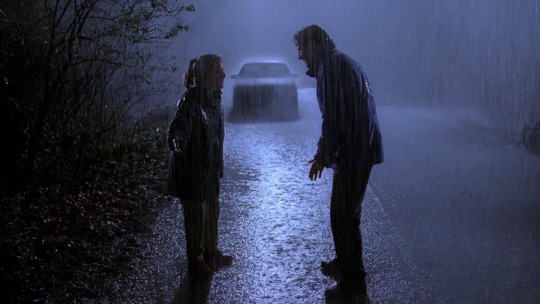
#the x files#dana scully#x files#fox mulder#gillian anderson#txf#david duchovny#msr#science#nasa#atmospheric science#academia#graduate student#graduate school#grad student#grad school#this joke is definitely only funny to me#but it’s really really funny to me#so idrc#i’m literally hilarious#and losing my mind
22 notes
·
View notes
Text
Have you ever seen the planet breathe? Would you like to?
#hylian rambles#environmental science#atmospheric science#i love satellite data#because you can do THIS!#earth
3 notes
·
View notes
Text




Zero Flyers Today - Unprecedented Drop in DOR in LA
Jan. 11, 2025
There were no planes all day today. There were none at all in the sky, not with trails, not without them. There were two helicopters flying together to the west in early afternoon, but no clouds, no trace of anything in the sky. Around 4pm PST we heard one and then saw three more before sunset, with no trails, and moving slowly.
This is unlike any other day I've ever seen. The orgone was high, perhaps too high for them to "fly." But there is another climate impact of these fires in LA that the media isn't reporting on, mostly because they don't even know it's something to report on. There has been a huge reduction in DOR sources, and that may have been the reason for the clean sky devoid of all travelers.
The fires destroyed 13,400 buildings cumulatively. What would the impact be of removing the DOR sources from this many buildings in an area, especially because the burned areas are very concentrated? All of a sudden, an entire neighborhood, miles of houses, and not just any houses, but the houses of the very rich, gone. That's thousands of wifi routers with boosters all over the building, everyone's cell phones, thousands of smart meters, smart homes, wireless security systems, smart TVs, computerized cars with their own tracking devices, and maybe the cell towers too. Even a normal house emits a deadly amount of DOR that people live with. Imagine houses this size and how many wireless gizmos are operating in there.
This DOR reduction would be like gifting hundreds of orgonite pieces to the neighborhood, but even better. The DOR is completely gone. not just neutralized. Perhaps with these fires, the Earth felt a sudden painful burning, then the relief all at once of the removal of the deadly energy that had been plaguing it. We think of all the destruction of the buildings and how sad it is. But we don't think about how much deadly energy suddenly left our Earth.
This may be part of a greater plan than anything we can understand. LA has been gifted. The weather weaponry is neutralized. The entire west has been gifted. Perhaps the Earth wants to forcibly remove DOR sources. Everywhere in the country has been getting slammed with winter weather, rain and snow. Only Southern California has been left dry and waiting for the arsonists to strike when the OR brings a wind from the east.
We have some relief in sight, and I now will need to observe how the removal of the extreme DOR of the destroyed neighborhoods impacts the weather. There is a tiny chance of precipitation in California next weekend, and it's just starting to show up on the forecast. Maybe the removal of DOR will allow the weather to rebalance quicker.
#orgone#orgone energy#orgonite#weather#wildfires#LA fires#pacific palisades#altadena#california#weather war#drought#climate change#atmospheric science#orgonomy#los angeles
4 notes
·
View notes
Text
Inez Fung

Atmospheric scientist Inez Fung was born in Hong Kong in 1949. Fung is one of the world's foremost experts on climate and the carbon cycle. She is currently a professor of atmospheric science at UC Berkley. Fung has won numerous awards, including NASA's Exceptional Scientific Achievement Medal, and the Carl Gustaf-Rossby Research Medal, the American Meteorological Society's highest honor for atmospheric scientists. She is a member of the National Academy of Sciences, and was a contributor to the Nobel Prize-winning Intergovernmental Panel on Climate Change.
Image source: Whitehouse.gov
#science#scientists#women in science#climate science#atmospheric science#hong kong#woc#women of color#asian-american
7 notes
·
View notes
Text
Everyone shut the FUCK up im in a developing supercell right now
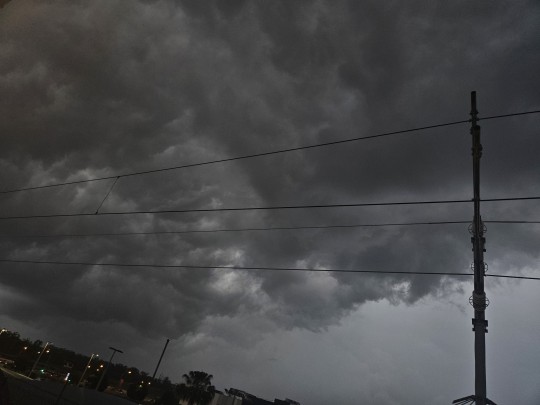
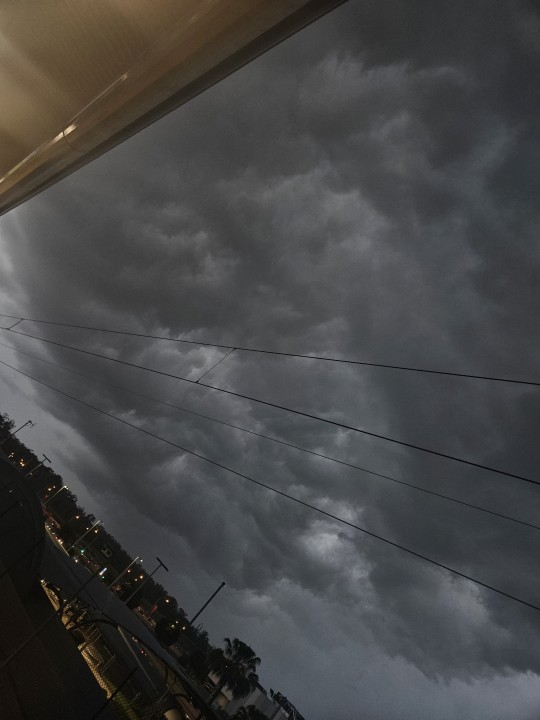
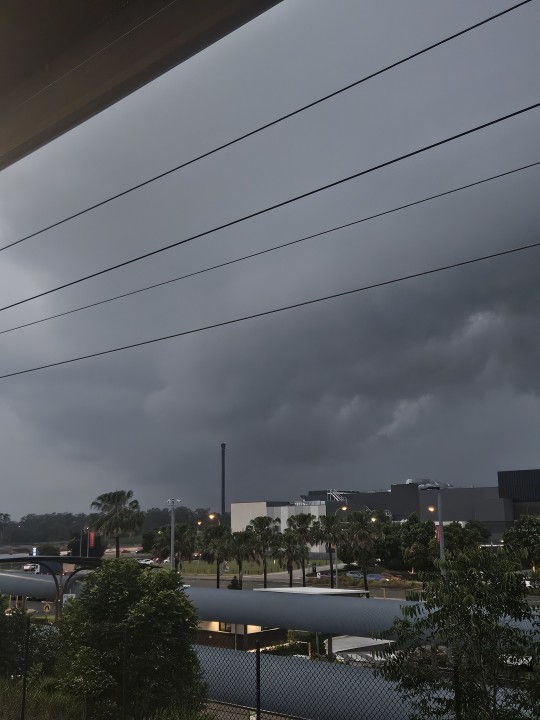
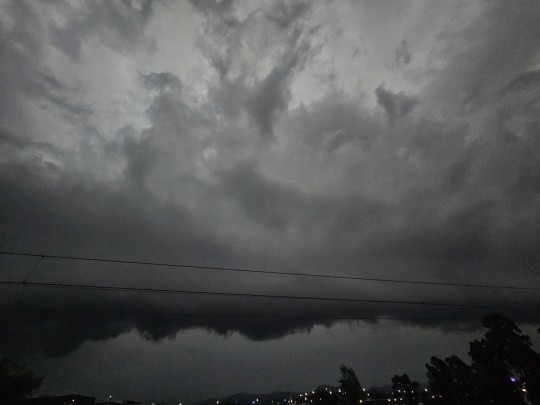


And the crowning jewel of my amateur weather photography career
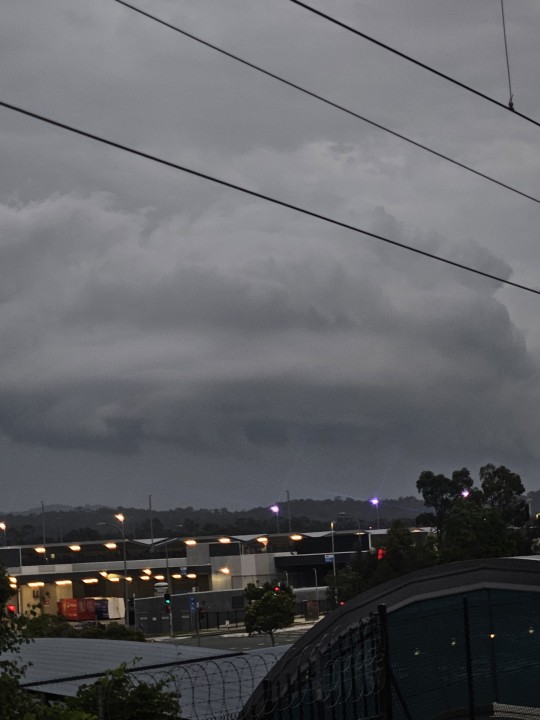
MESOCYCLONE
#i cried im so happy#the wind is SO strong right now#weather#atmospheric science#supercell#thunderstorm
5 notes
·
View notes
Text
New discoveries about the Venusian atmosphere may show a past with water
#deuterium#astrochemistry#planet venus#solar system#planets#planetary science#chemistry#venus#atmospheric science#atmosphere#water#venusian atmosphere
3 notes
·
View notes
Text
Playful Martian Dust Devils

The Martian atmosphere lacks the density to support tornado storm systems, but vortices are nevertheless a frequent occurrence. As sun-warmed gases rise, neighboring air rushes in, bringing with it any twisted shred of vorticity it carries. (Video and image credit: NASA/JPL-Caltech/LANL/CNES/CNRS/INTA-CSIC/Space Science Institute/ISAE-Supaero/University of Arizona; via Gizmodo) Read the full article
#atmospheric science#conservation of angular momentum#dust devils#fluid dynamics#Mars#physics#science#vorticity
77 notes
·
View notes
Text
Being able to create accurate weather models for weather forecasting is essential for every aspect of the American economy, from aviation to shipping. To date, weather models have been primarily based on equations related to thermodynamics and fluid dynamics in the atmosphere. These models are tremendously computationally expensive and are typically run on large supercomputers. Researchers from private sector companies like Nvidia and Google have started developing large artificial intelligence (AI) models, known as foundation models, for weather forecasting. Recently, scientists at the U.S. Department of Energy's (DOE) Argonne National Laboratory, in close collaboration with researchers Aditya Grover and Tung Nguyen at the University of California, Los Angeles, have begun to investigate this alternative type of model. This model could produce in some cases even more accurate forecasts than the existing numerical weather prediction models at a fraction of the computational cost.
Continue Reading.
#Science#Environment#Atmospheric Science#Meteorology#Physics#Machine Learning#Artifical Intelligence#AI
52 notes
·
View notes
Text
SPACE SCIENCE
||||||||||||||||||||||||||||||||||||
PLANETARY SCIENCE
THE UNIVERSE OF PLANETARY SCIENCE
■PLANETOLOGY
This field of planetary science will examine how planets form in any solar system, including their composition and dynamics in history.
■ASTROGEOLOGY
This field of planetary science will study rocks, terrain, and material in space.
□Areology
This field of astrogeology will focus on how geology is composed on Mars.
ATMOSPHERIC SCIENCE
■METEOROLOGY
This field of atmospheric science will study the weather.
■CLIMATOLOGY
This field of atmospheric science will examine the long-term atmospheric pattern and its influence.
■AERONOMY
This field of atmospheric science will examine the chemistry and any natural law influencing the upper atmosphere.
2 notes
·
View notes
Text
Eunice Foote

The history of women in science is one of my favorite topics to study. Seeing all the things they accomplished despite living through eras where women were often viewed as literal property is beautiful inspiring. I love how many women were able to break through the oppression of their age to make discoveries that continue to be crucial to our modern times.
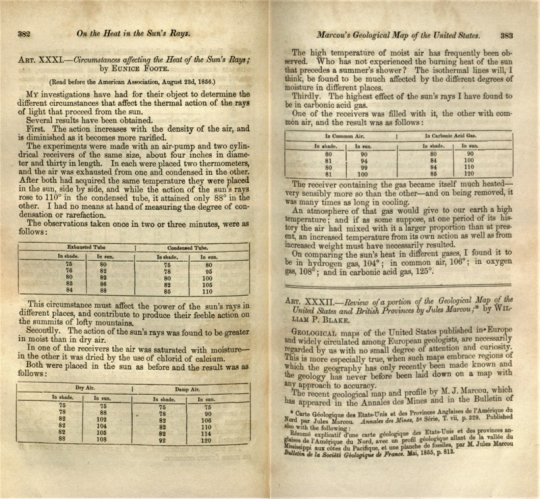
One of the many examples of this being Eunice Foote, an American scientist and women's rights activist. Eunice had many contributions to the field of chemistry, but the most important one was her experiments on how different gasses react to sunlight. In her experiment, Eunice put a gas in one cylinder, and had another empty cylinder, then she put them both in bright sunlight to see how their temperature changed over time. She performed this experiment with many different gasses, including CO2 and realized the cylinders containing a gas heated more than the ones containing a vacuum. By comparing gasses, she was also able to determine that some types of gas absorbed heat from sunlight better than others. Amazingly, Eunice correctly predicted that a large amount of CO2 in the atmosphere would lead to the planet's temperature growing.
Unfortunately. Eunice never received any credit for her discovery during her lifetime or in the years following it. However, in recent times this has finally begun to change.
2 notes
·
View notes
Photo
Wow
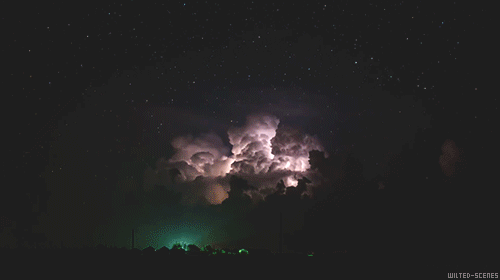
Thunderstorms over South Dakota
2M notes
·
View notes